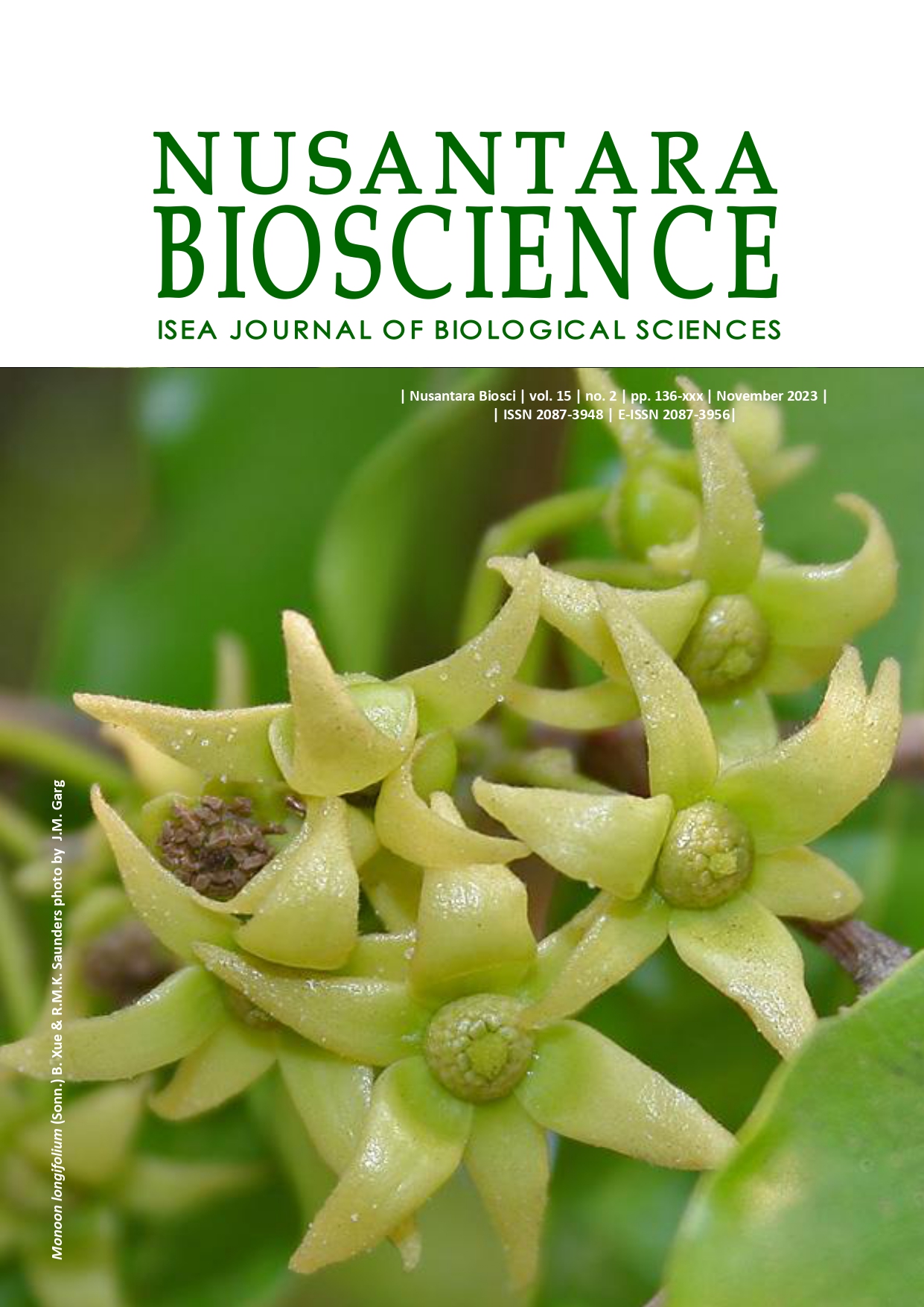The initial complete chloroplast genome of Ludisia discolor in Vietnam
##plugins.themes.bootstrap3.article.main##
Abstract
Abstract. Ho VT, Nguyen MP, Trinh TH. 2023. The initial complete chloroplast genome of Ludisia discolor (Orchidaceae) in Vietnam. Nusantara Bioscience 15: 232-237. Ludisia discolor (Ker Gawl.) Blume is traditionally utilized as an effective herb to treat various diseases. Due to its high medicinal value, this herb has been overharvested and faces extinction in a wild population. Morphological characterization to DNA barcode-based techniques are applied to accurately identify this plant for conservation and breeding purposes; nevertheless, they show limitations. This study aimed to characterize complete chloroplast (cp) sequences for effectiveness in plant species' classification and phylogenetic analysis. The cp genome of L. discolor collected from Vietnam was initially sequenced, annotated, and compared with published cp genomes from NCBI GenBank to understand its genetic makeup better. The results reveal that the complete cp genome of L. discolor is 159,043 bp, consisting of 96 protein-coding genes, 12 rRNA, and 33 tRNA genes. Moreover, 53 simple sequence repeats (SSR) were detected in this genome, most of which are polyA and polyT. Phylogenetic analysis also revealed a significant distance between the cp genomes of L. discolor from Vietnam with other L. discolor accessions from China. These findings could provide valuable insights into the taxonomy, plant identification, breeding, protection, and conservation programs of L. discolor in Vietnam.
2019-01-01

